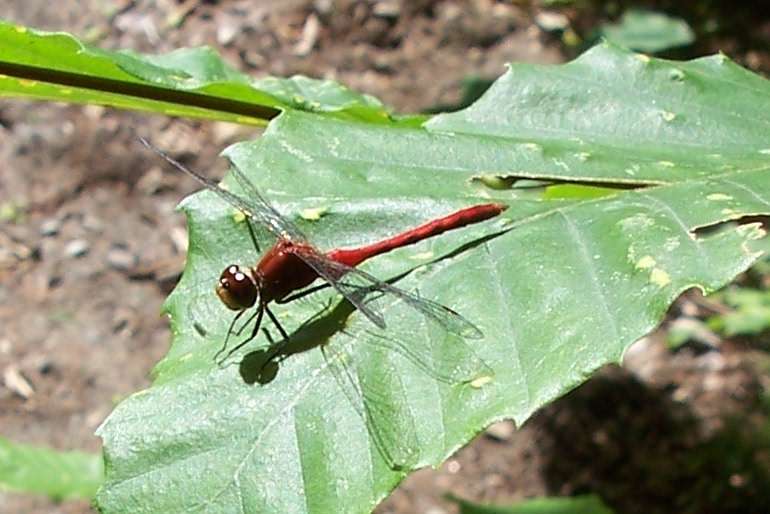Out in the Woods
- June 28th 2024
- Out in the Woods

The autumn meadowhawk dragonfly is seen everywhere in Sanford.
Dragonflies Devour Mosquitoes in the Air and Water
Photo: Kevin McKeon
By Kevin McKeon, Maine Master Naturalist
At least 158 species of dragonflies have been documented in Maine, comprising nearly 36% of the total number of species identified thus far in North America. So it’s no surprise that while walking the many trails in Sanford, you’ll see dragonflies chasing one of their favorite foods — mosquitoes. But they eat most of these pests during their life cycle as underwater nymphs, called naiads.
Around midsummer, after mating, female dragonflies flit and hover over bodies of water, dipping in their abdomens to lay eggs. In about a week the eggs hatch. The naiads spend up to six years in the water, eating mosquito larvae, various nymphs – even small fish and tadpoles. Their lower jaw reaches out and opens up sideways, snatching prey into their mouths. They chase prey by sucking water into their abdomen and then spitting it out.
Some species molt up to 17 times. During its final molt, the naiad crawls up the bank or vegetation where, after metamorphosis, it emerges from a split in its back as an adult dragonfly. Its body and wings are very soft, but after 12 hours or so of pumping itself up, it will be able to fly. A few days later its 2- to 5-inch-long long body will continue to harden and take on the bright colors of its species. Watch a video here.
Living on every continent except Antarctica, some adult dragonflies live for only a few weeks, while others live up to a year, hunting flies, mosquitoes and midges. Their arms slant upward, forming a type of basket and enabling them to scoop their prey and eat during flight. Dragonflies help humans by controlling populations of pest insects, especially those that threaten us most, such as mosquitoes and biting flies. A single dragonfly can eat hundreds of mosquitoes per day.
Dragonflies were some of the first winged insects to evolve, some 300 million years ago, and grew to 2 feet long. The 5-inch giant darner, found in Central America and the U.S. Southwest, is the largest modern species. A dragonfly called the globe skinner has the longest migration of any insect, flying 11,000 miles back and forth across the Indian Ocean using monsoon winds in both directions. They’ve been recorded at over 19,500 feet above sea level. Some dragonflies can reach speeds of up to 35 miles an hour.
Dragonflies can be mistaken for damselflies, which are similar in body shape but a bit smaller, and have wings that are folded at rest, along or above their bodies, compared with the wings of most dragonflies, which are held flat and away from the body. Dragonflies are agile fliers, while damselflies have a weaker, fluttery flight.
Editor’s note: Did you see something unusual last time you were out in the woods? Were you puzzled or surprised by something you saw? Ask our “Out in the Woods” columnist Kevin McKeon. He’ll be happy to investigate and try to answer your questions. Email him directly at: kpm@metrocast.net






